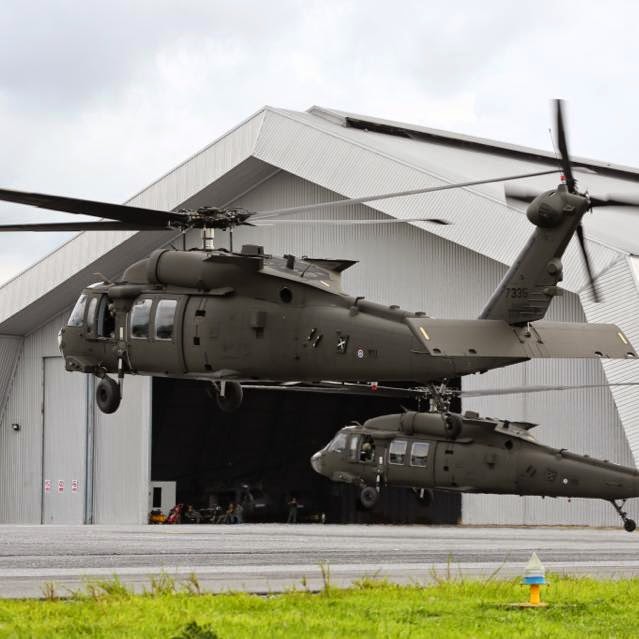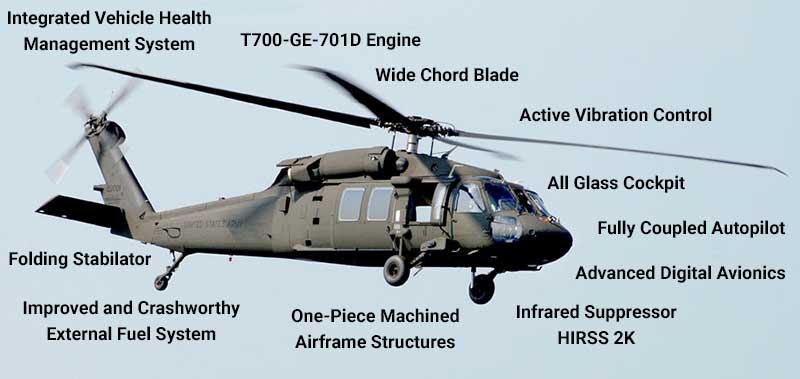Mastering the Skies: UH 60 Helicopter Maintenance Checklist
Wiki Article
Understanding the Mechanics and Design Behind Uh 60 Helicopters
The UH-60 helicopter, commonly understood as the Black Hawk, stands as a pinnacle of contemporary rotorcraft modern technology, embodying a blend of durable design and complex mechanics. From its creation to its existing iterations, the evolution of this airplane showcases a fusion of development and usefulness. As we peel off back the layers of the UH-60's design, a world of detailed systems and meticulous engineering emerges. Recognizing the auto mechanics and design behind this versatile aircraft introduces a world where accuracy satisfies power, and where each part plays an important function in attaining trip.History of UH-60 Helicopters
The background of UH-60 helicopters traces back to the late 1970s when the United States Army looked for a innovative and flexible utility helicopter to replace its aging fleet. In response to this demand, the Sikorsky Airplane Company developed the UH-60 Black Hawk helicopter. Introduced in 1979, the UH-60 quickly came to be a staple in army operations due to its impressive abilities.
The UH-60 was developed to master a selection of goals, including army transportation, clinical emptying, digital war, and special procedures. Its capability to adapt to various functions made it an important property to the U.S. uh 60. Military and various other army pressures all over the world
For many years, the UH-60 platform has undertaken several upgrades and variants to boost its performance and equal developing mission needs. These helicopters have seen extensive solution in conflicts such as the Gulf Battle, Afghanistan, and Iraq, showcasing their reliability and convenience in diverse functional environments. The UH-60's abundant background is a testimony to its long-lasting tradition as a premier energy helicopter.

Engine and Power Systems
Using sophisticated propulsion innovation, UH-60 helicopters are furnished with sophisticated engine and power systems to make sure optimum efficiency and dependability in a series of operational circumstances. The UH-60, generally called the Black Hawk, is powered by 2 General Electric T700-GE-701D engines, each with the ability of delivering up to 1,940 shaft horse power. These turboshaft engines supply the needed drive for the helicopter to accomplish its missions effectively, consisting of troop transportation, clinical evacuation, and fight assistance.
Blades System and The Rules Of Aerodynamics
Exactly how do the rotor system and aerodynamics of UH-60 helicopters contribute to their operational performance and flight capacities? The blades system of the UH-60 helicopter plays a critical role in offering lift and propulsion. The UH-60 includes a four-bladed, fully articulated blades system that permits high ability to move and security during trip. This design makes it possible for the helicopter to do a variety of missions, from transportation and medical evacuation to combat procedures.Aerodynamics additionally play a vital role in the efficiency of UH-60 helicopters. The streamlined fuselage and blades blade layout lower drag, allowing the helicopter to accomplish greater rates and far better fuel efficiency. The aerodynamic design of the UH-60 likewise adds to its capability to run in diverse environmental problems, consisting of hot temperatures and high elevations.
Avionics and Trip Control Systems

In its intricate control with the blades system and aerodynamics of UH-60 helicopters, the avionics and flight control systems form an essential network of innovations forming the aircraft's functional capabilities. In the UH-60, these systems consist of digital display screens, interaction radios, General practitioner navigation, weather radar, and auto-pilot systems.
The trip control systems of the UH-60 are responsible for equating the pilot's inputs into the appropriate adjustments to the blades system, guaranteeing steady flight and maneuverability. These systems contain hydraulic actuators, servos, and computer systems that function together to regulate the main and tail rotors, in addition to various other trip control surface areas. By precisely taking care of the helicopter's trip dynamics, these systems make it possible for pilots to perform a variety of missions, from transportation and search-and-rescue to fight operations, with precision and confidence.
Function and Applications in Air Travel
Avionics systems in UH-60 helicopters encompass a variety of electronic systems that help in navigating, communication, surveillance, and managing different aircraft features. These systems consist of digital display screens, autopilot systems, interaction radios, GPS navigating devices, and climate radar. Furthermore, these systems include safety attributes such as auto-pilot settings, terrain understanding advising systems, and stability enhancement systems to boost the total security and operational abilities of the UH-60 helicopters in different objectives, including army transport, medical emptying, search and rescue, and airborne firefighting.Final Thought
To conclude, the UH-60 helicopter is a versatile aircraft with a rich background and progressed engineering. Its engine and power systems, rotor system, the rules of aerodynamics, avionics, and trip control systems all work together to make it a reliable and efficient device. The UH-60's function and applications in aeronautics are substantial, ranging from army operations to search and rescue objectives. Its continued growth and usage demonstrate its relevance in the area of aeronautics (uh 60).In its complex control with the blades more info here system and the rules of aerodynamics of UH-60 helicopters, the avionics and trip control systems develop a vital network of modern technologies shaping the aircraft's operational abilities.The flight control systems of the UH-60 are responsible for converting the pilot's inputs right check this into the appropriate changes to the blades system, making sure steady flight and maneuverability. Avionics systems in UH-60 helicopters encompass a range of digital systems that help in navigation, communication, surveillance, and managing various aircraft features. Additionally, these systems incorporate safety and security functions such as autopilot modes, surface understanding cautioning systems, and stability enhancement systems to improve the general safety and functional abilities of the UH-60 helicopters in various goals, including troop transportation, medical evacuation, search and rescue, and airborne firefighting.
Its engine and power systems, rotor system, the rules of aerodynamics, avionics, additional reading and flight control systems all work with each other to make it a trustworthy and reliable machine.
Report this wiki page